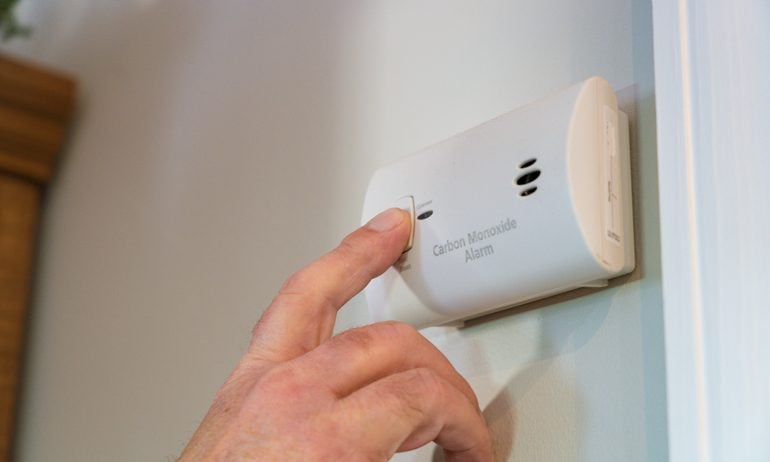Causes of Carbon Monoxide Poisoning in Homes
A few simple moves can make a big difference in prevention.

Many, or all, of the products featured on this page are from our advertising partners who compensate us when you take certain actions on our website or click to take an action on their website. However, this does not influence our evaluations. Our opinions are our own. Here is a list of our partners and here's how we make money.
To prevent carbon monoxide poisoning and keep your family safe, you can install carbon monoxide alarms outside each bedroom and on every level of your home, ensuring they are unobstructed by furniture or curtains.
Malfunctioning or incorrectly used fuel-burning appliances can release carbon monoxide, as can idling cars. Every year, hundreds of people die accidentally from carbon monoxide poisoning, according to the Environmental Protection Agency.
Many home security systems come with carbon monoxide monitoring features. Check out our Home Security roundup to learn more about these devices and services.
What is carbon monoxide?
Carbon monoxide (CO) is a colorless and odorless gas produced by burning fuel in cars, small engines, appliances and heating systems.
Exposure to carbon monoxide can make you feel very ill; high levels can kill. According to the Centers for Disease Control and Prevention (CDC), symptoms of carbon monoxide poisoning often mimic the flu, causing headaches, dizziness, weakness, nausea, vomiting, chest pain, and confusion. People often ignore the early symptoms of CO poisoning, which can lead to continued exposure, loss of consciousness and accidental death.
What causes carbon monoxide to build up in a house?
According to the American Lung Association, faulty or improperly vented appliances are the most common causes of carbon monoxide buildup in homes — especially following a power outage or emergency. These include:
Fuel-burning appliances such as your furnace, range, oven, water heater or clothes dryer.
Gas or wood fireplaces and wood stoves.
Coal or oil furnaces.
Space heaters, including oil and kerosene heaters.
Charcoal grills and camp stoves.
Gas-powered equipment like lawn mowers and power tools.
Car exhaust fumes, particularly if your home has an attached garage.
Tobacco smoke is also a source of carbon monoxide buildup in the home, especially without proper ventilation.
7 ways to help prevent carbon monoxide poisoning
Here are some of the easiest ways to help keep carbon monoxide from building up in your home.
Install battery-operated or battery-backup carbon monoxide detectors. Consider purchasing detectors that sound an alarm and have a digital readout that displays peak CO levels. To ensure proper function, regularly check the batteries and replace your CO detector every five years or follow the manufacturer’s recommended replacement date.
Have your fireplaces and fuel-burning appliances professionally serviced and inspected annually. Do this ahead of the heating season. Ensure flues and chimneys are connected, undamaged and free of blockages.
Buy vented fuel-burning appliances. Look for appliances or tools with the seal of a national testing agency. Ensure they are professionally and properly installed, and follow the manufacturer instructions and maintenance recommendations. Be careful using an unvented gas or kerosene space heater; make sure you use the recommended fuel type, keep interior doors open and crack a window for ventilation.
Avoid using ovens or clothes dryers for heat. This applies even if it’s just for a short time.
Operate generators outdoors only. Make sure they’re at least 20 feet from your home and any doors, windows or other openings. Never use a generator indoors, even with ventilation. Use a battery-powered or battery backup CO detector inside your home if you’re using a generator.
Never use a charcoal grill or portable gas camp stove indoors. Burning any kind of charcoal gives off CO. Avoid using portable flameless chemical heaters (MRE heaters) indoors as well.
Keep your vehicle properly maintained. Schedule annual exhaust system inspections for your car or truck to detect potential leaks. Never run a vehicle inside an attached garage, even if the garage is open. For detached garages, open the door and windows if the car is running inside. If your running vehicle has a tailgate that's open, also open the vents or windows to get air moving through. This can help prevent CO buildup.





